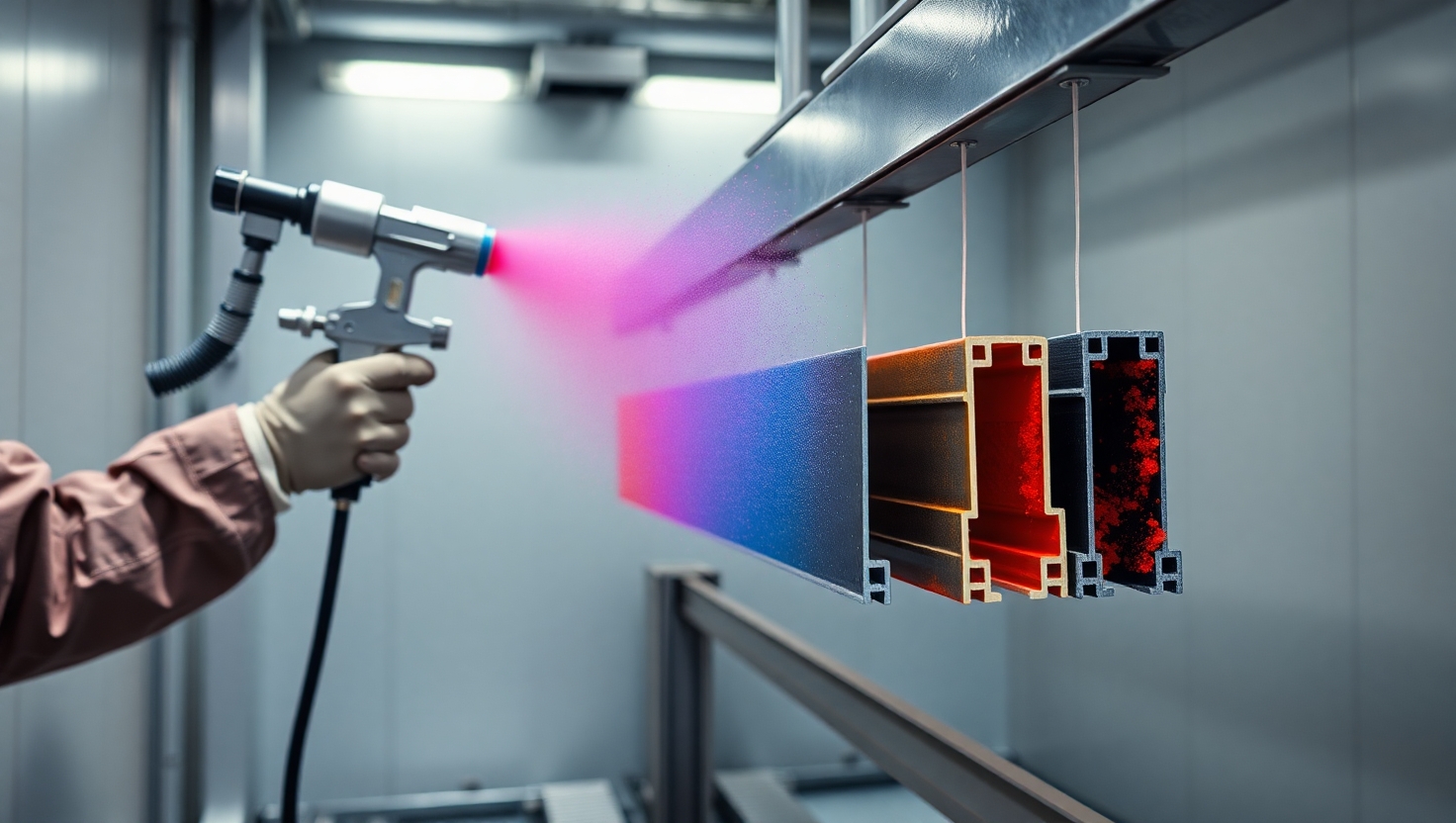How Powder Coating Works on Aluminium Profiles
Published by: ALUTimes | Date: July 10, 2025
Introduction
Powder coating is one of the most durable and visually appealing finishing techniques for aluminium profiles. Widely used in construction, automotive, and consumer goods, it enhances corrosion resistance, improves aesthetics, and ensures long-lasting color retention. This article explains the powder coating process in detail—from surface preparation to curing—and explores quality assurance methods, application areas, and advantages over traditional wet paint.
What Is Powder Coating?
Powder coating is a dry finishing process that uses finely ground polymer resin particles, pigments, and additives. These particles are electrostatically charged and sprayed onto aluminium surfaces, which are then cured in a high-temperature oven to form a tough, uniform coating.
Why Powder Coat Aluminium?
- Corrosion resistance: Shields aluminium against moisture, UV rays, and chemicals
- Durability: Highly resistant to scratches, chipping, and fading
- Eco-friendly: No solvents, low VOC emissions
- Color variety: Available in matte, gloss, metallic, and textured finishes
- Uniform coating: Ensures consistent thickness and appearance
Step-by-Step Powder Coating Process for Aluminium
- Cleaning and Degreasing: Aluminium profiles are cleaned using alkaline or acid-based solutions to remove oils, grease, and dirt. This ensures better powder adhesion.
- Rinsing: Thorough rinsing removes chemical residues from the cleaning phase. Deionized water is often used for purity.
- Surface Preparation (Etching or Chromating): The metal is etched to create a rough surface for mechanical bonding. Chrome-free pre-treatment like zirconium is also used for eco-compliance.
- Drying: Moisture is removed in a hot air drying chamber to prevent coating defects.
- Powder Application: Powder is electrostatically sprayed using a spray gun. The charged powder clings to the grounded aluminium profile uniformly.
- Curing: The coated aluminium is placed in a curing oven at 180–200°C for 10–20 minutes, depending on the material and powder type. This melts and chemically bonds the powder to the substrate.
- Cooling and Inspection: After curing, the profiles are cooled and inspected for defects like pinholes, orange peel texture, or uneven coverage.
Quality Control Measures
- Coating thickness test: Ensures proper coverage, typically 60–120 microns
- Adhesion test: Crosshatch tape test confirms bonding
- Impact and abrasion tests: Evaluate durability for transport and usage
- Gloss and color tests: Ensure visual consistency
Applications of Powder-Coated Aluminium
- Architecture: Windows, doors, curtain walls, cladding
- Furniture: Modular furniture and decorative panels
- Automotive: Bumpers, trims, alloy wheels
- Electronics: Enclosures and frames
- Solar panels: Mounting structures exposed to harsh weather
Common Defects and How to Avoid Them
- Pinholes: Caused by moisture or contamination—ensure thorough drying and clean substrate
- Orange Peel: Uneven surface texture—control spray technique and powder flow
- Poor Adhesion: Often due to poor pre-treatment—optimize surface preparation steps
- Over-baking or under-curing: Follow manufacturer’s recommended cure schedule
Powder Coating vs. Anodizing: Which Is Better?
Both processes offer excellent surface protection, but powder coating provides a wider color range and thicker protective layer, while anodizing preserves the metallic look and allows for clear coatings. Powder coating is ideal for bold colors and varied finishes, especially in decorative and architectural use.
Conclusion
Powder coating aluminium profiles is a reliable, cost-effective, and eco-friendly method for achieving high-performance finishes. With proper surface preparation and process control, manufacturers can achieve consistent quality that meets international standards. As demand for sustainable and durable metal finishes grows, powder coating continues to be a leading choice for the aluminium industry.
Disclaimer
This article is for informational purposes only. ALUTimes does not offer engineering or material certification services. For specific project requirements, consult a qualified surface finishing expert.

